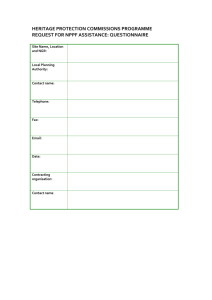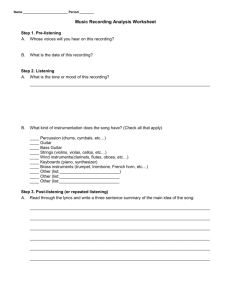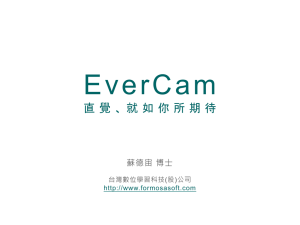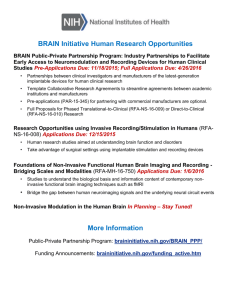Notes - Practice Centre
advertisement
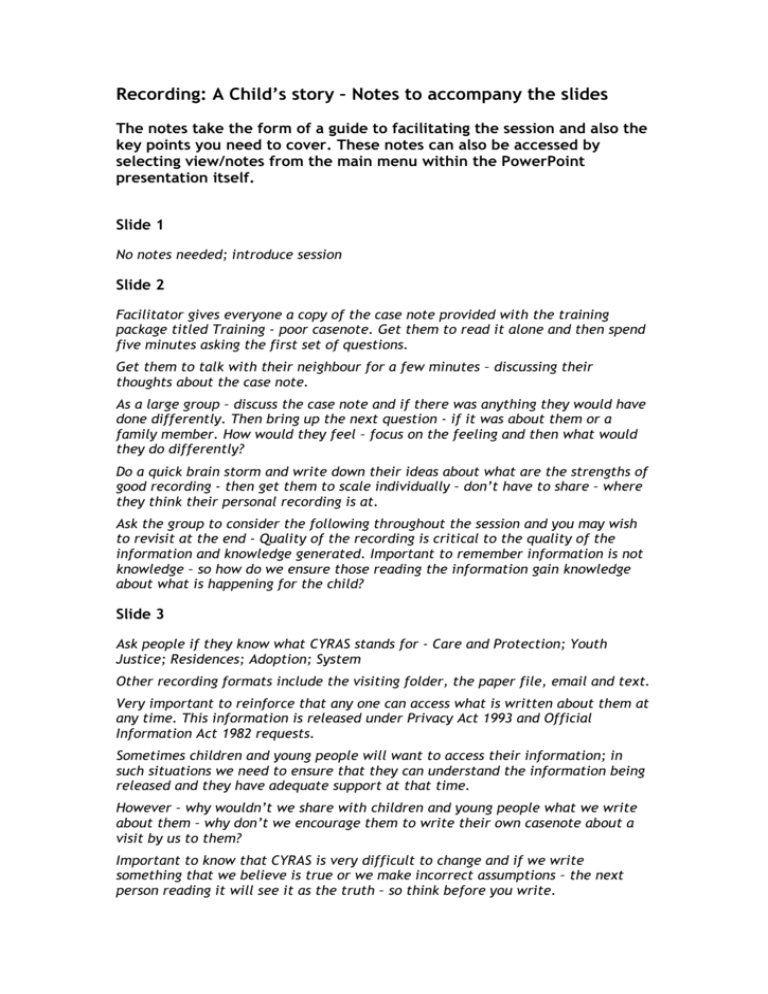
Recording: A Child’s story – Notes to accompany the slides The notes take the form of a guide to facilitating the session and also the key points you need to cover. These notes can also be accessed by selecting view/notes from the main menu within the PowerPoint presentation itself. Slide 1 No notes needed; introduce session Slide 2 Facilitator gives everyone a copy of the case note provided with the training package titled Training - poor casenote. Get them to read it alone and then spend five minutes asking the first set of questions. Get them to talk with their neighbour for a few minutes – discussing their thoughts about the case note. As a large group – discuss the case note and if there was anything they would have done differently. Then bring up the next question - if it was about them or a family member. How would they feel – focus on the feeling and then what would they do differently? Do a quick brain storm and write down their ideas about what are the strengths of good recording - then get them to scale individually – don’t have to share – where they think their personal recording is at. Ask the group to consider the following throughout the session and you may wish to revisit at the end - Quality of the recording is critical to the quality of the information and knowledge generated. Important to remember information is not knowledge – so how do we ensure those reading the information gain knowledge about what is happening for the child? Slide 3 Ask people if they know what CYRAS stands for - Care and Protection; Youth Justice; Residences; Adoption; System Other recording formats include the visiting folder, the paper file, email and text. Very important to reinforce that any one can access what is written about them at any time. This information is released under Privacy Act 1993 and Official Information Act 1982 requests. Sometimes children and young people will want to access their information; in such situations we need to ensure that they can understand the information being released and they have adequate support at that time. However – why wouldn’t we share with children and young people what we write about them – why don’t we encourage them to write their own casenote about a visit by us to them? Important to know that CYRAS is very difficult to change and if we write something that we believe is true or we make incorrect assumptions – the next person reading it will see it as the truth – so think before you write. Information about disposal of records is held on Doogle (refer handout disposing of information). It is also important that we prevent unauthorised access to records. The Privacy and Official Information Acts provide protection and rules around what, and to who, information can be released. Your POI team and legal will know what is best. Any requests for information, as soon as they are received, should be directed to your POI team. Slide 4 Sometimes we record to ensure people reading the case will see we have done something – this is sometimes important but should not be the main reason for writing the case note. If you feel it is important to record something then think about what the child reading the case note would think about what you have said and why you have said it – if we are benchmarking recording against what the child needs then we can not go wrong. Given the record provides all of this – we need to take care with the information we are loading in to the system – that it is fair, accurate, transparent, neutral and non-judgemental. It is important that what we record meets our obligations under the Public Records Act such as ensuring that information is full and accurate. (See handout ‘Recordkeeping help and advice’). Slide 5 Care, Claims and Resolutions – at National Office – used to be historic claims – they process claims from ex children in care We think we tell children why they are in care but often they don’t understand it or we tell them once and they are unable to process it – this is why recording is so important. Recorded information does tell us – how many calls we made to find a driver or to employ a contact supervisor or what bills we paid. It tells us how many times we called or visited and spoke with no one. While this is important – separate case notes for each attempt is not necessary – a summary can work just as well if not better. The aim of this session is to consider how we can record SMARTER Slide 6 Comment how: - Records are the account for our actions, including advice that we give and the decisions that we make - Records should be neutral in tone; they are format neutral – it is the activity that they provide evidence of, that is important. - Succinct and well structured records allow us to know why a decision was made and get an accurate idea of what activity took place. This is important for using the information for evidential purposes. - Keeping records free from jargon allows this information to be easily understood by anyone reading it - Good recordkeeping is part of effective information management. It helps us meet our obligations under Public Records Act, the Privacy Act 1993 and Official Information Act 1982. - Records may be discoverable during Court processes. Slide 7 Provide group with good case note example (as titled in the pack). Spend five minutes reading it. Spend some time in small groups discussing how this is different from the first one and some of the quotes above. How does reading this one make them feel – as opposed to the first one this morning in small groups. Come back to a group discussion - 15 minutes maximum for the exercise Every time it is important not to use acronyms, when talking about people – explain their relationship to the child or young person. When talking about professionals, use their title or position. It is not a place to record disagreements between sites or indeed staff in the same site – it is the child’s story. It is always important to keep in mind language that is used when recording information. Email communication is a formal record however sometimes content is mixed; e.g.: it contains personal and private information (holiday plans) as well as case specific information (lawyer for child’s view on the plan). Unfortunately thoughtless, inappropriate or unrelated comments may call into question the integrity and professionalism of our work. Slide 8 Guess what they are: Record information – visiting folders and CYRAS Store – CYRAS and paper file All visiting book notes are dated and have the child’s name on them – they are all transferred to the paper file. If they are needed at all for an audit, review or privacy request information release – they are available and the work is evident and visible in this way. If you are worried – make a note on CYRAS – with your analysis note or summary of activity that there are notes in the paper file. If you are putting assessments or reports on the paper file – make sure you summarise the key points on CYRAS and any actions required – don’t just note – report on paper file. If your office has a scanner – scan them in to save time. Relevant information in emails should be captured in the child’s record. Relevant is when the email records views, decisions and actions taken. Email is formal information and content, tone etc is important (see handout – ‘What emails do I need to keep as a record’). Remember – what is recorded is able to be released so think about a child or young person reading it when they are older and what you have said about them. Slide 9 Facilitator – ask people randomly who the audience is and who would be the most important? Discuss – how often should we do summaries – weekly, fortnightly, monthly – in what situations – YJ and CP FGC monitoring, children in care, support orders, youth court orders, young people in residences etc Slide 10 Facilitator guide discussion – aware of the summary sheets. If people don’t raise them as an idea – introduce them at the end of the conversation, hand them out and then spend time talking about them as per the slide questions. Assessment/Investigation sheet Intervention sheet General recording sheet Feel free to use, tweak etc – Send in some good examples to OCSW and you might get a chocolate fish. Slide 11 End up with asking the group key learnings from today – record on a white board and then put them around the office as a visual reminder Slide 12 These links are to the CYF and MSD recording policy, key information and key articles to read about recording Also the most recent social work now on best practice has many hints about recording, particularly in assessment/investigation


